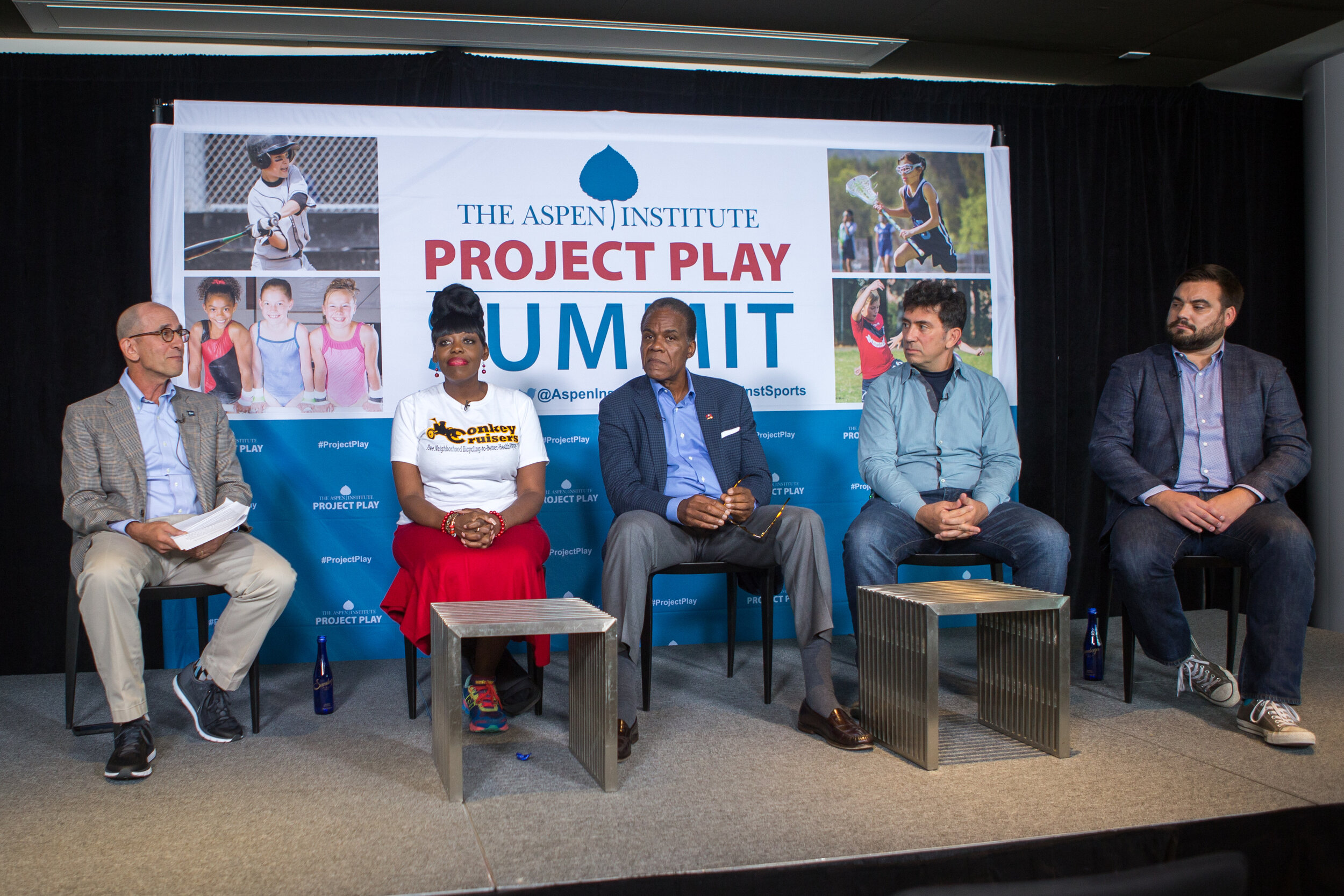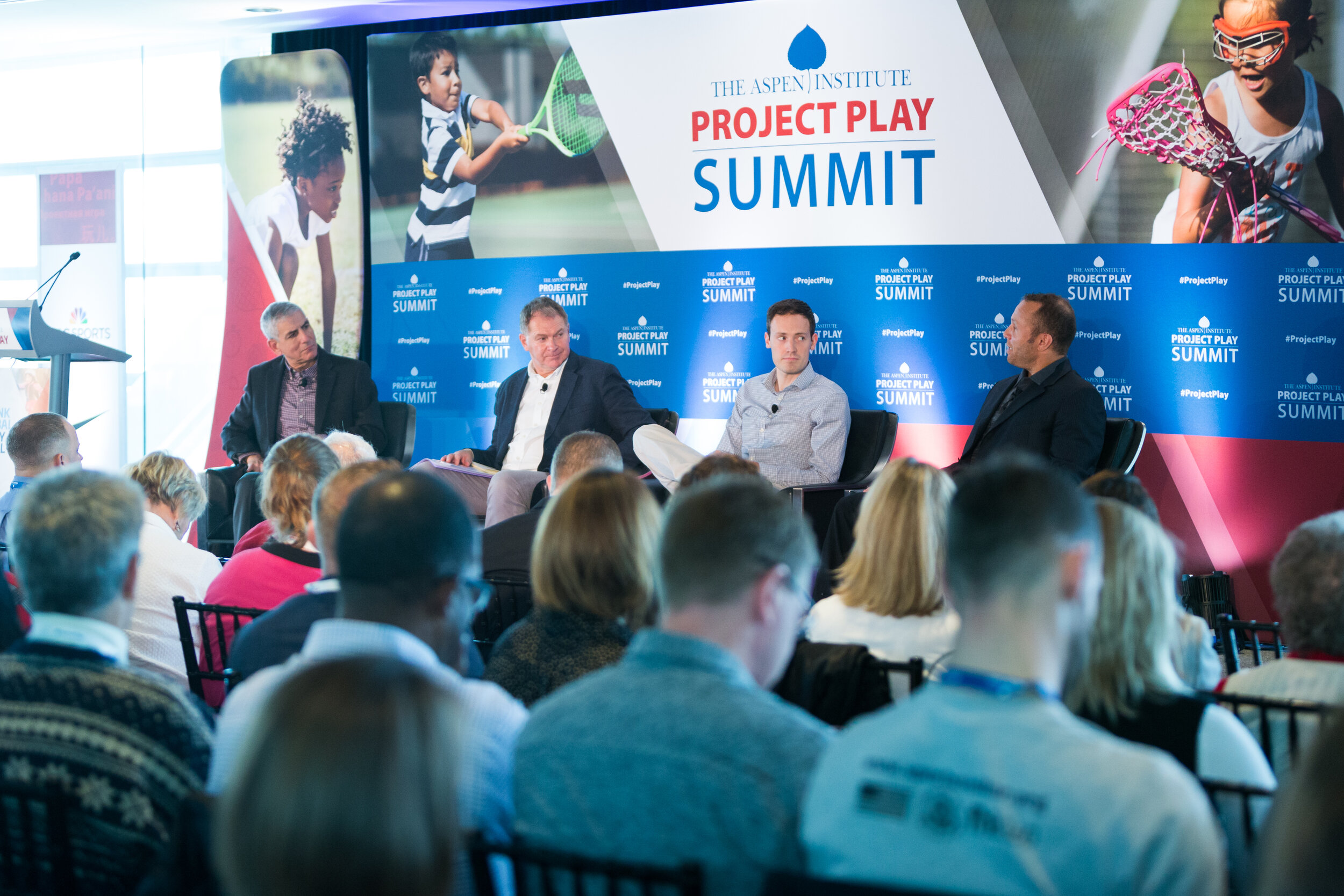The prevailing thought in youth sports seems to be bigger is better — a thought shared by communities across the United States, building multi-field youth sports facilities in hopes of capturing a slice of the multi-billion-dollar travel sports pie. But these facilities are being built where land is cheap and plentiful, far from where most kids actually live. By thinking creatively and efficiently using space, like the way the Over Under Initiative allows basketball courts to serve as street hockey rinks and futsal pitches, facilities and leagues can open the doors to more kids in every zip code.
From Sport for All, Play for Life:
State-of-the-art youth sports facilities are big, sprawling complexes with dozens of fields and courts at destination sites that cater to national tournaments. But growing access to play spaces for most children starts with the small. In urban areas, this may mean finding small spaces to develop quarter-sized courts for small-sided play, as what the U.S. Soccer Foundation has done with local partners in several cities. Other smaller-scale efforts can yield big results. When schools agree to share their playing fields and facilities, it gives families and kids, especially those in underserved communities, more places to play in the evenings, on weekends, and during summer (Robert Wood Johnson Foundation, 2012). Fields of dreams are great — but innovate, and they will come.
More fun with less space
How to engage an entire P.E. class with one tennis court: the U.S. Tennis Association’s youth tennis initiative divides a 78-foot court into four playing spaces and uses the surrounding area for tennis-related games. Smaller racquets and lower-bouncing balls make it all possible and help kids find success.
IDEAS
“You can take the smallest space in the world and imagine it being the Staples Center.”
Kobe Bryant, NBA legend
RESOURCES
LANDSCAPE YOUR COMMUNITY
Project Play’s Teamwork Toolkit includes free resources to landscape the state of play at a hyper-local level.
5 ways to help your child’s program think small
Learn more in this one-pager created for Project Play by the U.S. Olympic and Paralympic Committee.
SUMMIT SESSIONS





“Saying to a kid, 'Go play soccer,' when there is no safe playing field to play on, is kind of challenging.”
Ed Foster-Simeon, CEO, U.S. Soccer Foundation
FINDING SUCCESS
A shared-use agreement is a contract between two entities setting forth the terms and conditions for use of public property or facilities, such as school fields or gyms. They have helped grow after-school programs on school sites and can help boost kids’ physical activity levels (Robert Wood Johnson Foundation, 2014). Then-U.S. Secretary of Education Arne Duncan highlighted their potential to be used more broadly by youth sports organizations, to open more gyms and fields during non-school hours. To streamline the process, ChangeLab Solutions created a series of templates that local groups can use to customize their own agreements.
For more ideas, read about the commitments made by Project Play Champion organizations here.

